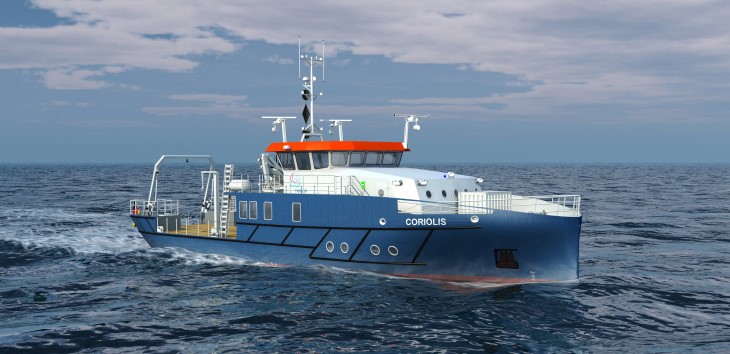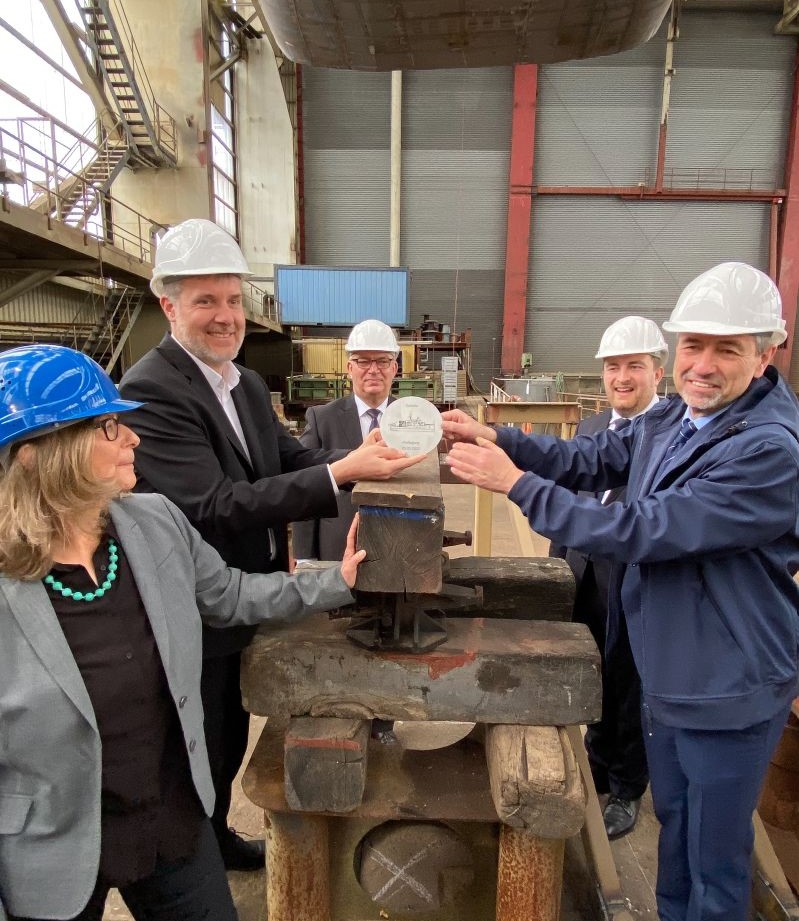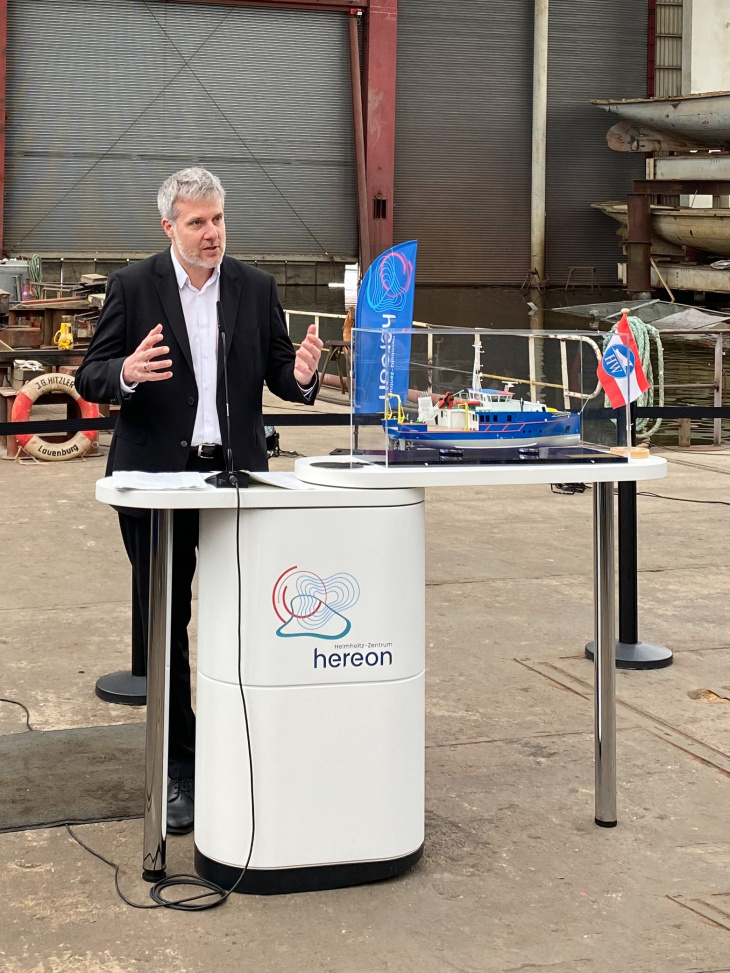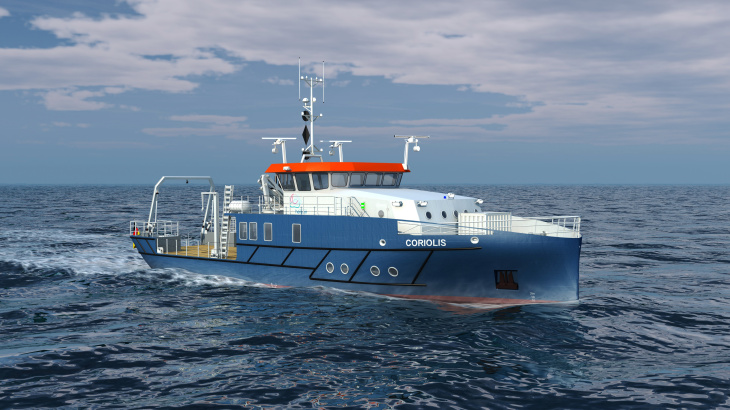Ceremonial laying of the keel in the Hitzler Shipyard

Innovation platform for climate-friendly shipping. Research ship Coriolis is a pioneer for interdisciplinary research and digitization
With the construction of the Coriolis, the Helmholtz-Zentrum Hereon is setting new standards in climate-friendly shipping. On March 23, 2023, the keel-laying of the research ship will take place at the Hitzler shipyard in Lauenburg. It is the first ship in the world to combine coastal, materials, membrane and hydrogen research on board. In addition, all research data can be accessed in real time thanks to the innovative digitization concept.

From valuable long-term data to pollutant analyzes to the effects of offshore wind turbines: the Ludwig Prandtl, built in 1983, has been a cornerstone of coastal research at the Helmholtz Center Hereon for many years. As she has reached the end of her tenure, it is time for a successor. The Coriolis is currently being built by the Hitzler shipyard in Lauenburg and is scheduled to be handed over to the Hereon in 2024. Around 13.5 million euros were approved in 2020 by the budget committee of the Bundestag for the construction of this research ship, which is unique in the world.

Dieter Janecek, Federal Government Coordinator for the Maritime Industry and Tourism, during his welcoming speech at the Coriolis keel-laying in the Hitzler shipyard. Photo: Hereon/ Martina Grünwald
In section construction, the keel laying means laying out the first section, i.e. the hull section, at the construction site using a crane. A coin is then placed on the bracing, a carrying device of the ship, under the first section as a lucky charm. In this context, the symbolic "laying on the keel" has the same meaning as the laying of the foundation stone when building a house.
"Today's keel-laying of the research vessel Coriolis shows that the transformation of the maritime economy has long since begun. By investing in research, the federal government promotes the technological leadership of German companies and at the same time strengthens climate protection in the industry. This is a good signal for Germany as a shipbuilding location and shows that we are also still competitive in the area of ​​special ships," says Dieter Janecek, the federal government's coordinator for maritime industry and tourism.
"Today, the day the keel is laid, it is already clear what the research ship will look like one day. The intensive exchange with the Hitzler shipyard - especially in the technical details - is a very important element that will contribute to the success of the new building," emphasizes Volker Dzaak, project manager of the Coriolis.
Equipment
Almost 30 meters long, 8 meters wide and a draft of 1.6 meters. Thanks to these dimensions, the Coriolis can be used in a variety of ways in rivers and the North and Baltic Seas. On an area of ​​47 square meters, it combines a wet and dry or e-laboratory as well as a laboratory for hydrogen research.

3D animation of Coriolis. Graphics: Hereon/ Hitzler Werft
The wet laboratory has a hydrograph shaft and an ultrapure seawater system for trace analysis. In addition, the laboratory is equipped with hydroacoustic systems for flow measurement (echo sounder and ADCP). The built-in FerryBox can be registered online and continuously measures physical, chemical and biological parameters such as oxygen concentration, salinity, temperature or pH - during the journey and in port. Thanks to the innovative digitization concept, this data can be accessed and shared in real time. The data for research stations and other research institutions are available live. With a crew of 3 people and 12 scientists on board, the Coriolis reaches a top speed of 12 knots.
"The special combination on board the future Coriolis of digitized environmental research and technology development for more climate protection fully corresponds to the guiding principle and the strengths of our center. For us, the Coriolis is also an ambassador for the Hereon,” says Prof. Dr. Matthias Rehahn, scientific director of the Hereon.
The climate-friendly drive
The Coriolis features an innovative propulsion system consisting of an electric motor that can be powered either by diesel, a battery or directly by hydrogen. The hydrogen is stored in the form of particularly space-saving metal hydrides. The Coriolis can be "fuelled" with up to 30 kg of hydrogen. The hydrogen drive is tested on board while driving. In these phases, the ship is completely emission-free. The diesel engine is also less harmful to the climate than conventional ship engines. Hereon researchers are producing a special membrane for the engine that separates nitrogen oxides from the combustion air, thereby minimizing the emissions that are produced.
“Shipping has lived on change and innovation for centuries. The new construction of the research ship Coriolis once again demonstrates the innovative character of our industry. We are proud to be able to make our contribution to the research of new propulsion concepts and thus to the future of shipbuilding," says Marek Klimenko, Managing Director of Hitzler Werft.
With the interdisciplinary research on board and its digitization concept, the Coriolis is an innovation platform for shipping. In addition, the testing of the hydrogen drive will provide important data and empirical values ​​for new, more environmentally friendly drive options. In the long term, this can pave the way for greener shipping and make a significant contribution to climate protection.
